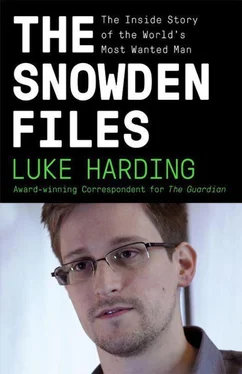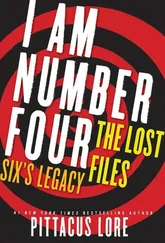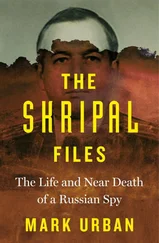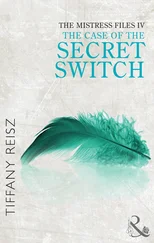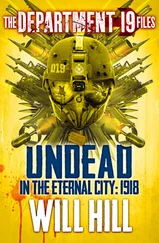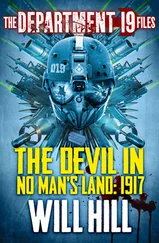For nearly a decade, Poitras had been working on a trilogy of feature-length films about America in the years following 9/11. The first, My Country, My Country (2006), was an acclaimed portrait of Iraq in the aftermath of US invasion, told through the story of a Sunni Iraqi doctor who stood as a candidate in the 2005 post-Saddam election. The film was intimate, moving, compelling and brave – a luminous piece of work, nominated in 2007 for an Academy Award.
Poitras’s next film, The Oath (2010), was shot in Yemen and Guantanamo Bay. It features two Yemenis swept up in President Bush’s war on terror. One, Salim Hamdan, was accused of being Osama bin Laden’s driver and detained in Guantanamo; the other, Hamdan’s brother-in-law, was a former bin Laden bodyguard. Through them, Poitras created a powerful and human-scale critique of the dark Bush–Cheney years.
The response from US officials was astounding. For six years, between 2006 and 2012, agents from the Department of Homeland Security detained Poitras each time she entered the US. This happened around 40 times, she says. On each occasion, the agents would interrogate her, confiscate laptops and mobile phones, and demand to know whom she had met. They would seize her camera and notebooks. Sometimes she was held for three or four hours. Nothing incriminating was ever discovered.
Once, in 2011, when she was stopped at John F Kennedy international airport in New York, she refused to answer questions about her work, citing the first amendment. The border agent told her: ‘If you don’t answer our questions, we’ll find our answers on your electronics.’
In response to this harassment, Poitras adopted new strategies. She became an expert in encryption. She learned how to protect her source material and sensitive information. She understood why, given the NSA’s pervasive spying capabilities, this was sometimes very important. She no longer travelled with electronic gear. Sensibly, Poitras decided to edit her next film from outside America. She moved temporarily to the German capital, Berlin.
In 2012, Poitras was working on the concluding part of the trilogy. Its theme this time was America, and the alarming rise of domestic surveillance. One of her interviewees was William Binney, an NSA whistleblower. Binney was a mathematician who had spent nearly 40 years at the agency, and helped automate its foreign eavesdropping. He left in 2001 and blew the whistle on domestic spying.
That summer Poitras made an ‘op-doc’ for the New York Times website: a short film that was part of her work-in-progress. In the accompanying Times article, Poitras described what it was like being an NSA ‘target’.
From afar, Snowden observed Poitras’s harsh treatment. He knew who she was and what she had been through. Asked later by the Times journalist Peter Maass why he had approached Greenwald and Poitras, rather than his own paper, Snowden replied: ‘After 9/11, many of the most important news outlets in America abdicated their role as a check to power – the journalistic responsibility to challenge the excesses of government – for fear of being seen as unpatriotic and punished in the market during a period of heightened nationalism. From a business perspective, this was the obvious strategy, but what benefited the institutions, ended up costing the public dearly. The major outlets are still only beginning to recover from this cold period.’
He continued: ‘Laura and Glenn are among the few who reported fearlessly on controversial topics throughout this period, even in the face of withering personal criticism, and resulted in Laura specifically becoming targeted… She had demonstrated the courage, personal experience and skill needed to handle what is probably the most dangerous assignment any journalist can be given – reporting on the secret misdeeds of the most powerful government in the world – making her an obvious choice.’
In Berlin, Poitras brooded over the email that now came in from Snowden: ‘I am a senior member of the intelligence community. This won’t be a waste of your time…’ (The claim was something of an exaggeration. Not in terms of Snowden’s access to secret material but job title – he was a relatively junior infrastructure analyst.) Snowden asked for her encryption key. She gave it. She took other steps to assure Snowden, then still an anonymous source, that she understood how to communicate securely. ‘I felt pretty intrigued pretty quickly,’ she says. ‘At that point my thought was either it’s legit or it’s entrapment. There were two sides of my brain. One was holy shit, it feels kind of legit.’
Poitras wrote: ‘I don’t know if you are legit, crazy or trying to entrap me.’
Snowden replied: ‘I’m not going to ask you anything. I’m just going to tell you things.’
Poitras asked if Snowden had seen her file, detailing her detentions entering the US. He said he hadn’t. But he did explain that he had ‘selected’ her because of the harassment she had experienced. The security agencies had the capacity to track and monitor ‘anyone’, not just Poitras – across borders, city or streets, he said. ‘I bet you don’t like this system. Only you can tell this story.’
If anything, Poitras was even more paranoid than Snowden during this early period. She remained suspicious of an opaque government plot against her. Meanwhile, in Hawaii, Snowden was taking extreme precautions. He never made contact from home or office. ‘He made it clear it was hard for him to communicate. He was going to another location to do so. He wasn’t doing it from his regular networks. He created some kind of a cover,’ Poitras says.
The emails continued to flow. There was one a week. They usually arrived at weekends, when Snowden was able to slip off. The tone was serious, though there were moments of humour. At one point Snowden advised Poitras to put her mobile in the freezer. ‘He’s an amazing writer. His emails were good. Everything I got read like a thriller,’ she recalls. Snowden was keen to keep up a regular correspondence but clearly found it difficult to find a secure spot to type. He gave little away. There were no personal details.
Then Snowden delivered a bombshell. He said he had got hold of Presidential Policy Directive 20, a top-secret 18-page document issued in October 2012. It said that Obama had secretly ordered his senior national security and intelligence officials to draw up a list of potential overseas targets for US cyber-attacks. Not defence, but attacks. The agency was tapping fibre-optic cables, intercepting telephony landing points and bugging on a global scale, he said. He could prove all of it. ‘I almost fainted,’ Poitras says.
At this point the film-maker sought out trusted contacts who might help her authenticate these claims. In New York she consulted the American Civil Liberties Union, the ACLU. Over dinner in the West Village she talked with the Washington Post ’s Barton Gellman. Gellman, a national security expert, thought the source sounded real. But he was a tad noncommittal. Meanwhile, the source made it clear he wanted Greenwald on board.
Back in Germany, Poitras moved ultra-cautiously. It was a fair assumption that the US embassy in Berlin had her under some form of surveillance. In connection with her latest documentary, Poitras had been in touch with Julian Assange, Washington’s bête noire , who since the summer of 2012 had been holed up in London’s Ecuadorean embassy. Given the company she’d been keeping and the many other reasons she was a person of interest to US security forces, she could be sure that any conventional means of communication would be monitored. Phones were no good; email was insecure. How could she contact her friend Greenwald about her mysterious correspondent?
Читать дальше
